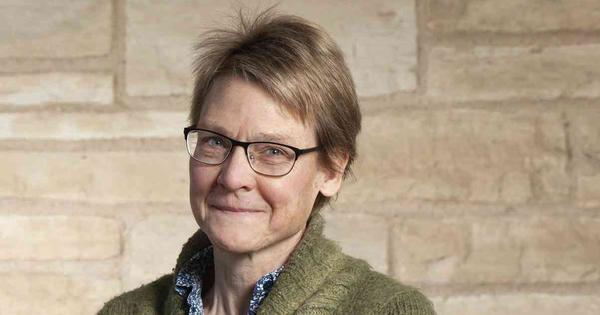
There is one story that belongs to us all, no matter which part of the planet we may reside in or come from. A story that we share with every single ancestor and every more-than-human living being. It’s the story of our Earth. And in turn, the story of our universe. An epic thriller of a tale, an adventure unlike any other, one that began 13.8 billion years ago and still continues to unfold. It is also a tale that sadly few of us have had access to. In Marcia Bjornerud’s beautiful, brilliant Turning to Stone: Discovering the Subtle Wisdom of Rocks, this is acknowledged early on – “Few average Earth citizens have had access to the sweeping vision of the planet through time that modern geoscience now provides,” she writes,” and to those who have never been taught the language of the Earth, its story seems inaccessible and irrelevant.”
Perhaps this is why the stories we tell now about who we are mostly exclude Nature. The natural world is simply a passive backdrop against which the “real” human stories unfold. Bjornerud, a long-time professor at Lawrence University, a small liberal arts college in Wisconsin, US, has spent decades trying to convince her students otherwise through classes and fieldtrips – and us too through a series of books that offer us lucid geological illumination and insight. These include Reading the Rocks: An Autobiography of the Earth, Timefulness: How Thinking Like a Geologist Can Save the World, and Geopaedia: A Brief Compendium of Geological Curiosities. Only in Turning to Stone though, does she attempt to interweave the personal and the geological – “In my earlier books, I had incorporated short personal anecdotes as entry points into geologic concepts, but nothing really autobiographical,” she said. “I finally realised that I could use the arc of my own life – specifically, my deepening understanding of the earth over my career – as a way to ease people into a geologic worldview.”
Beginning with sandstone
The result is a wondrous, unusual memoir, in which descriptions of a sequence of rock types intertwine with the story of Bjornerud’s own personal and professional life. We begin with sandstone and childhood. Bjornerud grew up in the 1970s, a child of Norwegian Americans, in a small rural community in northwestern Wisconsin. The biography of the sandstone – their youth deep inside Proterozoic mountains, part of a tight-knit community of granite, the erosion of the mountains, rain dissolving their neighbouring minerals while they alone survived – is as important and central as her own. Bjornerud excels in offering us details of place, deep place, and an understanding that the landscape of her childhood is a participant in larger, longer stories – the Cambrian sandstones of Wisconsin as a setting of settler colonialism and long-term environmental degradation in the form of rampant deforestation and soil depletion.
In the next chapter, we move to the North Shore of Lake Superior, the site of Bjornerud’s first multiday field trip as a geology major – and here she is collecting intriguing-looking rocks, all unalike, yet which all turn out to be basalt. The most common of rock types on Earth. An igneous rock that once oozed from subterranean fractures. And what now forms the bedrock upon which human life thrives. At this point in her life, Bjornerud is finding her tentative way into the discipline—learning what it means to be a geologist, “a path that felt anything but predestined” since she entered an introductory geology course only to fulfil credit requirements! As an outsider from the humanities, she revelled at first in the lexicon of geology, with names for landforms and rocks drawn from mythology, alchemy, and many languages. It was only later that she “began to understand the stones themselves as records of far more ancient worlds: each a text to be translated, a portal into the hermetic inner life of Earth.”
Journeying through life
In this way, we journey through her life, following her as she experiences different life roles – daughter, sister, friend, wife, mother, professor, widow. Through it all, as she says, the company of rocks is a constant, and in Turning to Stone, she picks certain rock types and places them varyingly in fond focus. Tuff in the Sierra Nevada mountains in California when Bjornerud is a young graduate, Diamictite in the Svalbard archipelago when she’s on a fieldtrip as a PhD student, as a postdoc, Turbidite in Ellesmere Island in Arctic Canada, Dolomite, that she feels no affinity to, when she’s an unhappy tenure-track professor at a place and institute where she feels under-nourished, Granite at a time of great change and shift, Eclogite for when she’s on a happy, rejuvenating sabbatical in Norway, the land of her ancestors, Glass and Flint for a period of tumult in Italy and elsewhere, and finally Quartzite, in the here and now where she’s taking a group of students on a fieldtrip to Point of Rocks, a particular exposure of Baraboo Quartzite that is geologically special for many reasons, including the fact that they are “timeless” rocks born and reborn, for a time beneath mountains, and for a time up top, beholding the stars.
The journey is long and rewarding. Not only are we allowed glimpses into a life, but also into the history of a discipline, and the major principles and philosophies that have governed and shaped it over the centuries. When Bjornerud began her training in the 1980s, the geoscience community were still absorbing the implications of plate tectonics – that explains why mountains grow, why earthquakes and volcanoes occur where they do – which had just been figured out in the late 1960s. The crucial role that life plays in modulating the chemistry of the oceans and atmosphere began to be appreciated in the 1970s, high-resolution records of past climate weren’t available until the 1980s, and the idea that human activities could rival natural geologic processes as agents of global change didn’t gain widespread acknowledgement until the 1990s. Now, as Bjornerud says, might be the golden age of the discipline with new instrumentation, greater computational capacity, and an all-important shift toward systems thinking and imagining.
What Bjornerud also movingly brings to the foreground is the importance of the geologic worldview. While not everyone can or should become a geologist, she says, geologic habits of mind—an instinct for Earth’s rhythms, a feeling for our place in its story – are essential to the physical and psychic well-being of humankind. The view of Earth as inert and unresponsive has led not only to environmental catastrophe but also to cultural anomie: We don’t remember who we really are. We are untethered, un-grounded, un-anchored. Learning to read the storylines of Earth’s history from rocks, Bjornerud rightly insists, can help provide a feeling of embeddedness in the earth, in the cosmos, and a sense of continuity and kinship with past and future.
The geologic worldview also helps inculcate the practice of “roaming freely across space and time,” enabling us to hold multiple versions of the world simultaneously in our mind – imagining shifts in the landscapes around us, how they might have once been deep seas, high mountains, flat plains. This, most importantly, allows us to see ourselves in miniature, and as part of a long lineage of creatures on an old planet, in a deeply ancient universe.
The story that belongs to us all is a convoluted one – hardly neat, hardly linear, and the only way to begin to understand it is to be able to “see” in multiplicity across vast timelines, to imagine deep into the past, and deep into the future. Rocks help us do this. They are our mentors and guides – our wise counsellors. Turning to Stone joyfully shows us how, over and again, inviting us to appreciate rocks, as Bjornerud has done, as raconteurs, companions, oracles, and sources of existential reassurance. It is difficult to emerge from reading Turning to Stone un-changed, unemotional. Bjornerud animates the stone-world, sets it ringing with resonance, plunges into rocky depths, and holds up for us a vision of life principled by humility and connection.
Janice Pariat is the author of Boats on Land: A Collection of Short Stories, the novels Seahorse, The Nine Chambered-Heart, and Everything the Light Touches. Currently, she teaches Creative Writing and Art History at Ashoka University.
Turning to Stone: Discovering the Subtle Wisdom of Rocks, Marcia Bjornerud, Flatiron Books.
📰 Crime Today News is proudly sponsored by DRYFRUIT & CO – A Brand by eFabby Global LLC
Design & Developed by Yes Mom Hosting






